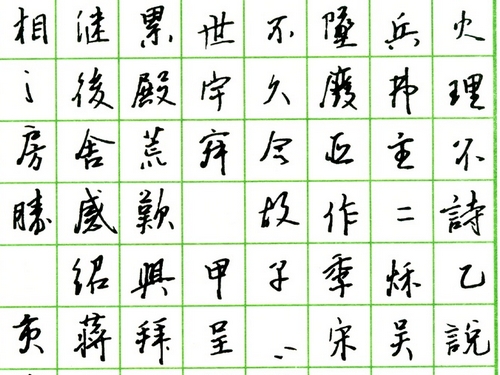Chinese calligraphy, also called Shu fa in Chinese is regarded as a traditional art of writing which is existed in Asian cultures. In the history of Chinese art, calligraphy has always been held in equal importance to painting.
The calligraphy artists are capable of producing variety styles and forms of Chinese characters by controlling the concentration of ink, the thickness of the paper and the flexibility of the brush. What’s interesting to western people is, diffusing ink blots and dry brush strokes are viewed as a natural impromptu expression rather than a fault. To the artist, calligraphy is a mental exercise that coordinates the mind and the body to choose the best styling in expressing the content of the passage.
Tools used to produce Chinese characters are reputed as Four Treasures of the Study - brush, paper, ink stick and ink stone. On the basis of function, brushes are classified into three groups: hard, soft and both. Brush handles are usually made of bamboo, wood, lacquer or porcelain. Brushes made of ivory or jade are rare and precious, presenting the owner’s social statue. The paper used for writing calligraphy has to be soft and fine textured, suitable for conveying the artistic expression of both Chinese calligraphy and painting.

Calligraphy looks simple. It seems like anyone with a brush and Xuanzhi (calligraphic paper) could write Chinese characters. But actually calligraphy is a form of art that involves a great deal of theory and specific writing skills. The greatest ancient Chinese calligraphy master should be Wang Xizhi, who has exerted a profound influence on the calligraphers and scholars throughout history. The legend is said that during his childhood, the pond in front of his family was blackened by washing the brush after his daily exercises.
Regarded as the most abstract and sublime form of art in Chinese culture, calligraphy is "the way characters are written is a portrait of the writer." Calligraphy is a reflection of a person's emotions, moral integrity, character, education level, accomplishments in self-cultivation, and even approach to life. During the imperial era, calligraphy was used as an important criterion for selection of executives to the imperial court. Unlike other visual art techniques, all calligraphy strokes are permanent and incorrigible, demanding careful planning and confident execution. While one has to conform to the defined structure of words, the expression can be extremely creative.
Many Asian countries are influenced by ancient Chinese calligraphic culture. Koreans and Japanese equally adore calligraphy as an important treasure of their heritage. In the Western World, Chinese calligraphy also owns a large amount of fans and has a wide influence on western art. For example Picasso once said that if he was born a Chinese, he would have been a calligraphy artist rather than a painter.
